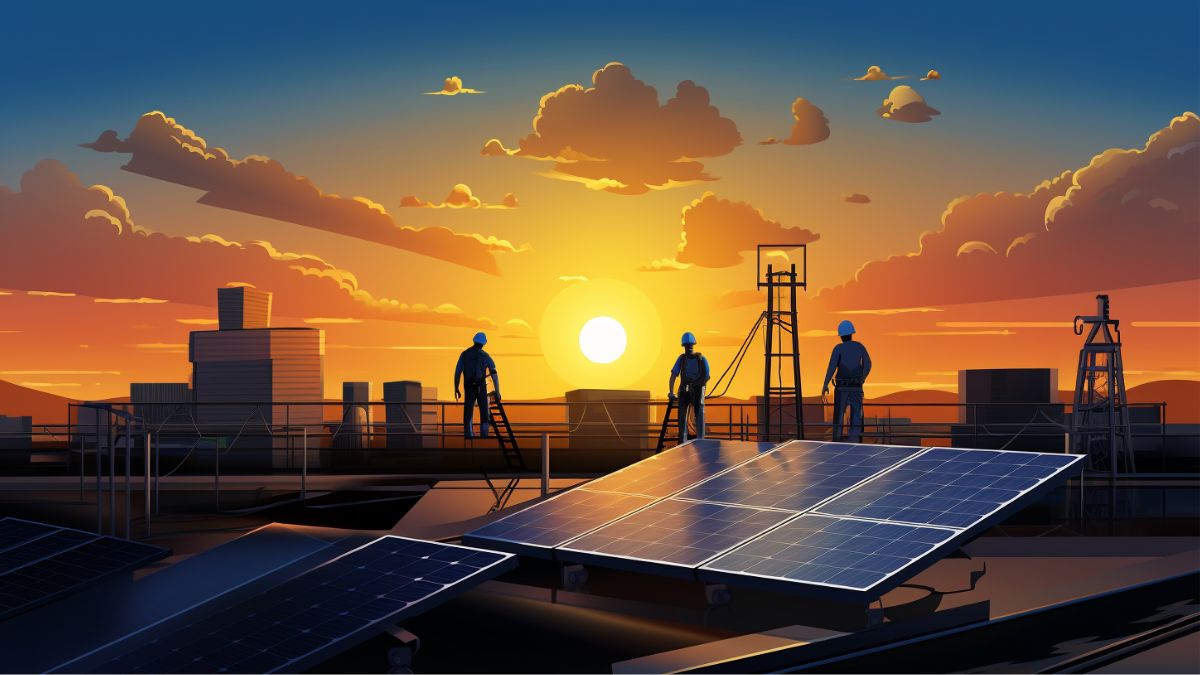In the realm of renewable energy, the adage ‘the more, the merrier’ holds true. Opting for solar energy is a significant step towards sustainability, but the addition of more solar panels to an existing system warrants a meticulous evaluation.
This article aims to illuminate the key factors to be taken into account in this process. From precise energy needs assessment to the technical complexities of system compatibility, every aspect is crucial.
Moreover, understanding permit requirements and potential incentives also play an integral part in this decision-making process. Furthermore, the article delves into the importance of expert consultation to navigate these considerations effectively.
Offering a comprehensive guide, this article is designed to equip the reader with the knowledge required to make an informed decision on expanding their solar system.
Assessing Energy Needs
In order to determine the number of additional solar panels required for an existing system, a thorough assessment of current and projected energy needs is indispensable. This involves evaluating capacity, understanding energy consumption patterns, and conducting a detailed load analysis.
Future energy needs should also be factored into the assessment, considering potential changes in lifestyle or energy usage. The system size is another crucial consideration, as it affects the number of panels that can be added and their optimal arrangement for maximum solar potential.
Furthermore, changes in local weather patterns and solar irradiance should be taken into account. By conducting a comprehensive and accurate assessment of energy needs, individuals can ensure a successful expansion of their solar system.
Related Article: How Many Solar Panels In a 10kW System?
Panel Compatibility and Upgrades
A profound consideration when augmenting an established array of photovoltaic cells with new ones is the compatibility and potential upgrades of the panels.
Upgrading panels can be a meticulous process, requiring a thorough check of all components to ensure seamless integration. Compatibility issues may arise if the new panels differ from the existing ones, affecting both functional and aesthetic considerations. Obtaining panels of the same type ensures a uniform look and operation, enhancing the overall system’s efficiency.
An important technical facet is the inverter capacity, which may necessitate an upgrade to support larger systems. Alternatively, the adoption of microinverters can be beneficial, simplifying add-on projects by allowing individual panel installations and operations, thereby enhancing system performance and reliability.
Related Article: Why a Solar Inverter Fails – What Should You Do Repair or Replace It?
Choosing an Installer
Choosing an appropriate installer for the augmentation of a photovoltaic system carries paramount significance. This often involves careful consideration of the original installer’s familiarity with the project and the potential need for a new installer.
Analyzing installer qualifications forms a crucial step. This includes taking into account their experience and professional reputation. Evaluating installer reviews can provide insight into the quality of workmanship, customer service, and overall satisfaction of previous clients.
Seeking multiple installation quotes allows for an effective comparison of costs and scope of work proposed by different installers.
Finding a reputable installer with a commendable track record ensures the successful implementation of the project. This contributes to an increased sense of belonging within the solar-powered community.
Related Article: 7 Warnings to Watch Out for When Picking a Solar Provider
Permitting and Incentive Factors
Navigating the nuanced network of permit requirements and incentive eligibility proves paramount when pondering the potential expansion of a photovoltaic installation. Understanding regulations, in particular, is an essential step in this process, as these rules can have significant bearing on the feasibility of adding panels to an existing system.
Likewise, navigating interconnection requirements is vital to ensure a seamless integration of additional panels.
Concurrently, maximizing financial incentives demands careful assessment of one’s eligibility for various schemes, as well as the potential impact on tax credits. For instance, some incentives may only be claimed once per property or individual.
Lastly, adjustments may be necessary for performance-based incentives, thus necessitating a comprehensive understanding of the alterations and implications involved in expanding a solar panel system.
Technical Considerations
Delving into the technical considerations, it is critical to assess the touch capabilities and existence of a viewport when incorporating new panels into an established solar setup.
- Optimal placement: It is vital to evaluate the best location for the new panels, maximizing sun exposure and avoiding shading.
- System capacity: The existing system’s ability to handle additional panels is essential. This includes assessing the inverter’s capacity and potential need for upgrades.
- Monitoring software: Ensuring the existing system’s software can monitor the performance of the new panels is crucial.
- Wiring requirements and maintenance needs: An examination of the existing wiring and its ability to accommodate the new panels is necessary, as well as understanding the increased maintenance needs that additional panels might bring.
These considerations help ensure a successful and efficient solar panel integration.
Conclusion
In conclusion, the process of integrating additional solar panels into an existing system necessitates meticulous assessment of energy needs. This involves carefully considering panel compatibility and potential upgrades. Prudent selection of an installer is also crucial in ensuring a successful integration. This includes understanding permitting and incentive factors.
Attention to specific technical aspects is also important. This comprehensive approach ensures an optimal, efficient, and cost-effective enhancement of the existing solar energy system. Parallel understanding in these domains is integral to the successful expansion of one’s solar capacity.




